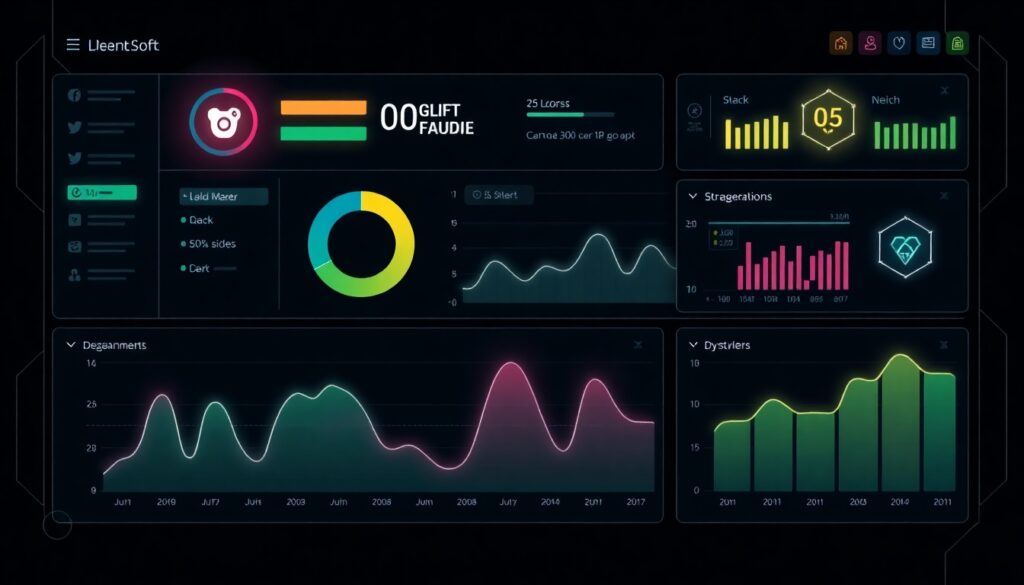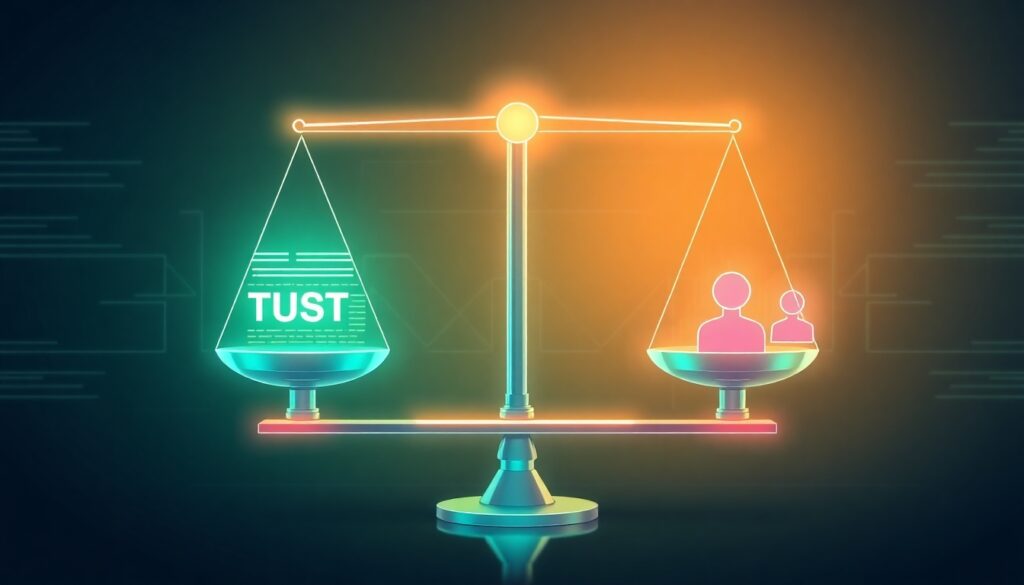In recent years, clickbait has emerged as a powerful yet controversial tool for driving user engagement. As dopamine-fueled curiosity pulls users into a vortex of exaggerated claims and misinformation, trust in online media hangs in the balance.
With roots tracing back to yellow journalism and evolving through today’s social media algorithms, clickbait’s impact on engagement metrics and user trust presents a complex challenge for content creators navigating the digital realm.

Decoding the clickbait formula

Clickbait is a copywriting technique that captures attention through sensationalist headlines, relying on curiosity gap, thus triggering emotional responses: the user click.
At its core, clickbait captures attention through sensationalist headlines that often contain exaggerated claims or misleading information. This approach triggers emotional responses or curiosity, compelling users to click on links. The allure of clickbait is driven by the curiosity gap—a psychological phenomenon where the brain feels compelled to fill in missing information, tapping into emotions such as surprise, anger, or intrigue.
Despite its controversy, as content often fails to deliver on its promises, this emotional pull leads users to click, even if they suspect the content might not be entirely truthful.
Clickbait serves as a powerful marketing tool but poses challenges by potentially spreading misinformation and eroding trust in digital platforms. Its dual nature—being an effective marketing strategy and a source of misinformation—highlights the complexity of its role in the digital landscape.
From yellow journalism to digital bait

The roots of clickbait can be traced back to the era of yellow journalism, where sensational headlines were used to boost newspaper sales.
These attention-grabbing tactics have since evolved with the advent of digital media.
The shift from print to online formats introduced new metrics, such as click-through rates and social media shares, which have reshaped content strategies.
In the digital age, content creators are driven by the need to optimize these metrics, leading to the proliferation of clickbait.
The focus on engagement metrics has transformed the way headlines are crafted, with a greater emphasis on capturing user attention quickly and effectively. This shift has been further accelerated by social media platforms, where content with higher engagement is prioritized by algorithms, creating a feedback loop that reinforces the use of clickbait tactics.
The historical context of clickbait’s evolution underscores the influence of digital advancements on content creation.
As technology continues to evolve, so too does the landscape of digital media, with clickbait remaining a prominent feature in the quest for user attention and engagement.
The neuroscience of curiosity

| Element | Impact |
| Dopamine Release | Reinforces behavior of clicking on sensational headlines. |
| Information Gaps | Brain seeks to close gaps, driven by curiosity. |
Clickbait’s effectiveness can be attributed to its ability to exploit the brain’s reward systems and curiosity gaps. When individuals encounter headlines that hint at intriguing information, their brains experience a sense of anticipation, triggering the release of dopamine—a neurotransmitter associated with pleasure and reward.
This dopamine release reinforces the behavior of clicking on sensational headlines, creating a cycle of curiosity-driven engagement.
Scientific research has shown that the brain’s reward system is activated when individuals seek to close information gaps. This process is deeply rooted in human psychology, as the brain naturally seeks to resolve uncertainties and complete incomplete narratives.
Clickbait leverages this innate drive by presenting headlines that entice users with the promise of satisfying their curiosity.
While these insights into human psychology can enhance engagement, they also underscore the ethical responsibility of content creators to use such knowledge constructively.
The role of dopamine in reinforcing clickbait engagement highlights the power of psychological reinforcement in shaping online behavior.
Clickbait’s digital footprint
| Aspect | Effect |
| Engagement Metrics | Increases reactions, shares, and comments. |
| User Trust | Can undermine trust due to misleading content. |
Engagement metrics and algorithmic favor

Clickbait significantly influences user engagement metrics, affecting how content is perceived and shared across digital platforms.
Elements like unusual punctuation and provocative phrases can increase user reactions, shares, and comments, amplified by social media algorithms prioritizing high interaction content. This feedback loop enhances visibility and reach, posing challenges for content creators balancing engagement with authenticity, as the allure of visibility may tempt prioritizing sensationalism over substance.
The trust paradox

Despite its effectiveness in driving traffic, clickbait faces criticism for contributing to the spread of misinformation and undermining trust in online media. The sensational nature of clickbait headlines can lead to user disappointment when the content fails to meet the expectations set by the headline.
This mismatch between promise and delivery erodes trust and can have lasting implications for the credibility of content creators and platforms.
How does clickbait affect user trust?
Clickbait can undermine trust in digital media by creating disappointment and skepticism. Users encountering misleading headlines may become disillusioned, less likely to engage with future content, and more discerning, affecting content creators’ credibility.
This leads to frustration, declining engagement, and challenges in maintaining audiences and reputations in a competitive digital landscape.
Navigating the clickbait landscape

As digital media continues to advance, content creators face the challenge of balancing the need for engaging content with the responsibility of providing accurate and valuable information. Navigating the clickbait landscape requires a nuanced approach that prioritizes authenticity and transparency while still capturing user attention.
Digital platforms play a crucial role in mitigating the spread of misinformation by implementing algorithms and content moderation practices that prioritize reliable content.
By fostering an environment that values credibility and accuracy, platforms can help reduce the prevalence of misleading headlines and promote a more trustworthy digital ecosystem.
Content creators, on the other hand, must embrace ethical storytelling and prioritize the integrity of their work. By crafting headlines that accurately reflect the content and avoid sensationalism, they can build trust with their audiences and contribute to a more informed digital landscape.
As the digital media landscape continues to evolve, the future of clickbait remains uncertain.
However, the importance of maintaining a balance between capturing attention and preserving the integrity of information is indubitably clear. As both content creators and consumers, understanding the dynamics of clickbait will be essential in navigating the complexities of the digital age.
Sources
